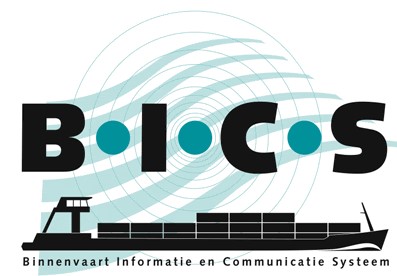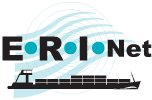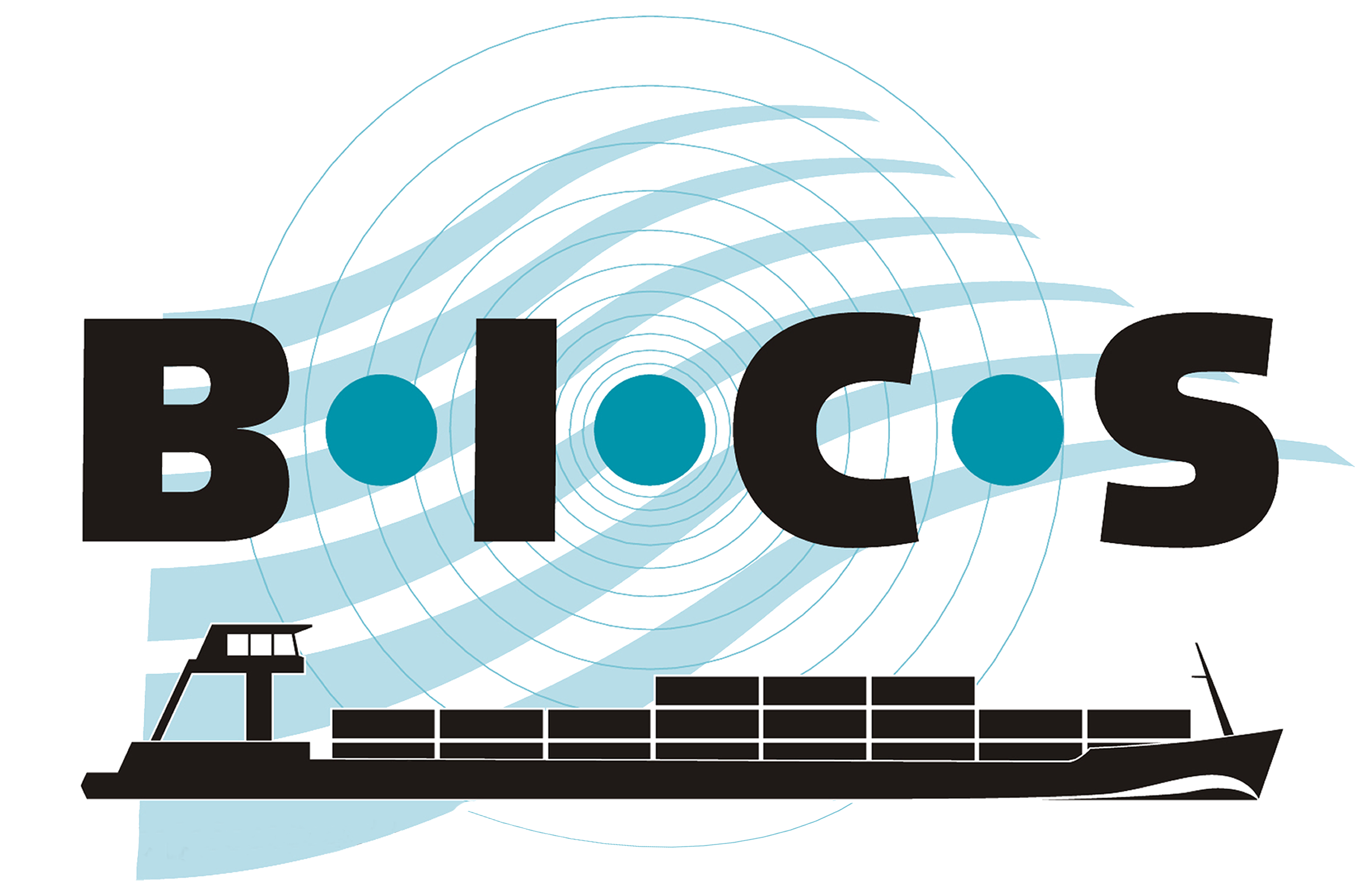BICS
 In the Netherlands and abroad, target ships are obliged to provide travel and cargo information to waterway authorities. The Inland Shipping Information and Communication System (BICS) offers the possibility of electronic reporting for this purpose. Ships and waterway authorities exchange information through secure electronic connections. Ships subject to electronic reporting requirements can use BICS for this purpose, while non-reporting ships can voluntarily make electronic reports.
In the Netherlands and abroad, target ships are obliged to provide travel and cargo information to waterway authorities. The Inland Shipping Information and Communication System (BICS) offers the possibility of electronic reporting for this purpose. Ships and waterway authorities exchange information through secure electronic connections. Ships subject to electronic reporting requirements can use BICS for this purpose, while non-reporting ships can voluntarily make electronic reports.
 BICS is known among skippers as the software on their PC through which they send "BICS messages." Electronic reporting accelerates and improves the provision of data, ensuring strict confidentiality of business and privacy-sensitive information. This allows VHF channels to be used again for nautical and safety traffic. BICS has been in existence since 1996 and is developed to exchange data quickly, easily, and securely between ships and waterway authorities.
BICS is known among skippers as the software on their PC through which they send "BICS messages." Electronic reporting accelerates and improves the provision of data, ensuring strict confidentiality of business and privacy-sensitive information. This allows VHF channels to be used again for nautical and safety traffic. BICS has been in existence since 1996 and is developed to exchange data quickly, easily, and securely between ships and waterway authorities.
 BICS is the European standard for electronic reporting and can be used from Rotterdam to the Black Sea, adapted to the requirements of various waterway authorities. Therefore, the system is multilingual and provides a universal solution for travel, cargo, and other data reporting.
BICS is the European standard for electronic reporting and can be used from Rotterdam to the Black Sea, adapted to the requirements of various waterway authorities. Therefore, the system is multilingual and provides a universal solution for travel, cargo, and other data reporting.
How does BICS work?
BICS sends electronic messages about the ship, crew, travel, and cargo via secure (mobile) internet connections to waterway authorities and port authorities. With BICS, this can be done in the same way throughout Europe, in the skipper's native language. BICS uses standardized electronic messages (EDI) and is suitable for complying with electronic reporting requirements. Rijkswaterstaat developed BICS in collaboration with users, and it is deployable both on ships and onshore.
BICS information is mainly received by waterway authorities and port authorities. This information is essential for smooth and safe traffic handling and ensuring the protection of people and the environment. In emergencies, BICS provides quick insight into whether hazardous loads are involved and what they are.
Data exchange with BICS is fast, reliable, and treated strictly confidential. This eliminates the need to communicate privacy-sensitive or business information via unsecured connections. This relieves VHF channels and prevents unauthorized eavesdropping, ensuring the privacy and security of communication.
After installing BICS, the fixed data of the ship and commonly used barges can be easily recorded in the program. Important data such as the ship's name, dimensions, ship type, and ship number are easy to retrieve and automatically available for each new report.
BICS includes an extensive set of reference data that skippers need to make electronic reports. This information includes names of all loading and unloading places, types of cargo, and precise names of all permitted dangerous substances for water transport. Thanks to these pre-entered data, spelling mistakes, incomprehensibility, and language problems are a thing of the past.
For each new journey, only the variable data need to be entered, such as departure port, destination, cargo type, quantity, draft, and number of crew members. This data can often be easily selected from handy drop-down lists.
The operation of BICS is based on modern internet techniques, with BICS accessible through a web browser. What makes BICS interesting is that it can also be used in situations without an internet connection, thanks to the installation of BICS software on the user's computer. However, sending electronic reports requires an internet connection from the skipper.
Handy Extras in BICS
Container transport
Thanks to collaboration with stowage software from external market parties, container ships can exchange cargo information seamlessly with operators, terminals, and others. Provided cargo data from shippers is efficiently processed into an optimal stowage plan via a stowage program in the onboard computer. This external stowage software ensures that retyping information for electronic reporting is unnecessary. BICS and the stowage software share the same data, allowing (container) cargo information to be reported to authorities via BICS with a single click.
Travel and cargo journal
The BICS software allows the user to easily keep a travel and cargo journal, build a business archive, and effortlessly generate a complete transport or CMNI document.
Exemption from monthly paper submission to CBS
Skippers who make electronic reports via BICS are exempt from the monthly obligation to submit in writing to the Central Bureau for Statistics (CBS) in the Netherlands what they have transported. Each BICS report automatically generates a copy to the CBS for statistical purposes.
Internationally Usable and Cross-Border
BICS is recognized as the international standard for the exchange of electronic messages between ships and waterway and port authorities. The BICS software is therefore standard delivered in multiple languages: Dutch, German, French, and English. Users see screens in their chosen language. All lists in BICS, such as types of cargo and ADN (Accord européen relatif au transport international des marchandises Dangereuses par voies de Navigation intérieure), are available in the selected language.
Since skippers of different nationalities navigate the European inland waters, multilingualism facilitates cross-border electronic reporting. Various waterway authorities and authorities in each country offering River Information Services (RIS) process electronic reports from ships. With BICS, reports can be made in a uniform way because it uses international standards, also known as ERI messages.
ERI standards are supported throughout Europe, allowing data to be transmitted only at departure for a journey from Rotterdam to Giurgiu in Romania or from Hamburg to Sète on the Mediterranean. Along the way, the ship can suffice with reporting any minor changes and a brief identification via VHF when approaching a traffic post, lock, bridge, or port. This efficient system enables a smooth journey, with data updated only at certain points in the route.
Electronic Reporting Obligation
What is the electronic reporting obligation?
Ships subject to reporting requirements must electronically provide certain travel and cargo information to the competent authorities. This obligation is described, among other places, in:
- Rhine Navigation Police Regulations (RPR Article 12.01)
- Communication Regulations for National Inland Waterways (Article 2)
- Electronic reporting obligation for inland navigation in Flanders
The need for electronic reporting lies in the fact that the consequences of an incident with a ship can be limited if the authorities have as much data as possible about the ship, cargo, and the number of crew members. In addition to disaster response, electronic reports are used for various other purposes, including:
- Traffic guidance: This includes strategic traffic information, lock and bridge management to ensure the safe and efficient flow of ships.
- Transport management: This includes port and terminal management, cargo and fleet management, to streamline logistical processes.
- Statistics: Collecting data through electronic reporting contributes to generating statistics.
- Costs for the use of waterway infrastructure: Electronic reports can be used to determine and collect costs associated with the use of waterway infrastructure.
- Border control: Electronic reports can contribute to effective border control measures by enabling authorities to monitor and regulate the flow of ships and cargo.
- Customs services: Electronic reports are important for customs activities, such as tracking the import and export of goods and enforcing regulations related to customs formalities.
Where does the electronic reporting obligation apply?
The obligation for ships subject to the reporting obligation to electronically provide travel and cargo information applies to various waterways, including the Rhine, as well as to all waters where the Inland Shipping Police Regulations (BPR) apply.
At what time should an electronic report be made?
A reporting ship must send an electronic report before departing or before entering any of the aforementioned river sections where the reporting obligation applies. Moreover, it is necessary to make a new electronic report for each change in travel and cargo information. The use of BICS makes this process simple and efficient.
Can BICS be used for electronic reporting?
BICS produces a message type that complies with the European standard (ERINOT), ensuring that the travel and cargo data you enter can be used for receipt by the competent authorities as a valid electronic report.
If you are not obligated to make electronic reports, you are free to voluntarily use BICS.
In which countries is BICS usable?
| Country | Linked system |
|---|---|
| Netherlands | IVS-Next |
| Belgium | VisuRIS |
| Germany, Luxembourg, France, and Switzerland | NaMIB |
| Austria, Bulgaria, Croatia, Czech Republic, Hungary, Romania, Serbia, and Slovakia | CEERIS |
